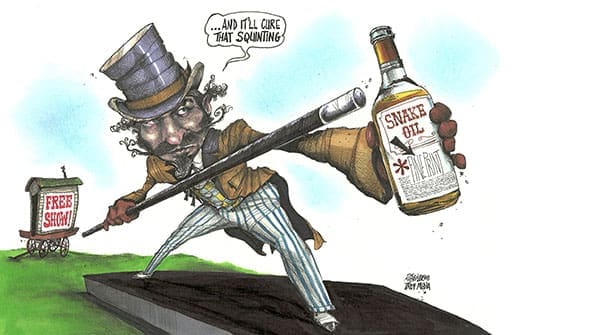Reading Time: 3 minutes
 Crude oil markets firmed up in the last week to levels not seen in almost a year. Does that indicate a real change in direction or is it just a passing phase?
Crude oil markets firmed up in the last week to levels not seen in almost a year. Does that indicate a real change in direction or is it just a passing phase?
In sharp contrast to its January meeting, the virtual ministerial meeting of the Organization of Petroleum Exporting Countries and its allies in OPEC+ held last week was almost a cakewalk.
But what next?
The Saudi decision to cut output was for two months – February and March. Next month, the group will need to decide on output for April and beyond. Will they increase their output, as was originally scheduled? Will Saudi Arabia continue to lift the heavy weight unilaterally? Will Russia be ready to contribute to any output cut, in case required?
There are pitfalls in every direction.
But in recent days, crude oil markets have been emitting positive signals:
- the high OPEC+ compliance rate with production cuts;
- the wide stock market rally;
- improving demand scenario;
- the larger than expected United States inventory decline;
- Saudi Aramco’s price hike for sales to Europe;
- the possibility of a stimulus package in the U.S.;
- a weaker American dollar, making commodities cheaper for international buyers.
All these factors contributed to the rally.
The possibility of tighter markets also made the markets bullish. Goldman Sachs analysts say they expect oil demand to rebound to 100 million barrels per day (bpd) as soon as this year, reported Irina Slav in an Oilprice.com piece.
OPEC+ is also insisting that it would continue the push to quickly clear the crude surplus, stressing the importance of accelerating market rebalancing, Bloomberg reported.
In a communique on Wednesday, OPEC+ ministers seemed closely aligned on the merits of keeping a tight leash on supplies. This was despite the fact that Moscow has been taking a conflicting view on supply cuts, insisting they could provoke a flood of supplies from rivals like U.S. shale drillers.
OPEC’s internal data showed that, with their strategy to control output, bloated oil inventories in developed nations should subside back to their 2015-to-2019 averages by August.
“The gradual rollout of vaccines around the world is a positive factor for the rest of the year boosting the global economy and oil demand,” the OPEC+ joint ministerial monitoring committee also underlined.
All this was music to the market.
But there’s another side to this story.
Crude oil demand recovery depends considerably on the revival of the transportation sector. That’s not visible – yet. Recovery in transport fuel has not only ground to a halt but has gone into reverse in some key areas, says Julian Lee in a Bloomberg piece.
Rising COVID-19 cases in northern China have led to restrictions to discourage travel during the week-long Spring Festival holiday. In the last week of January, flight departures from Chinese airports were about half what they were on average in December, reported Bloomberg NEF. Commercial flights were reportedly running at less than 60 percent of comparable 2019 levels.
The scenario in other major crude-consuming nations is not too different. Canada has tough new regulations on overseas trips. Flights from London, Dubai, Saudi Arabia – just to mention a few – have been curtailed.
In the meantime, the new United States administration of President Joe Biden continues to talk big about policies to curb climate change.
So the scenario for the global crude oil market may not be quite so rosy.
When OPEC+ meets next month, ministers will have to decide about their combined output for April and onwards. With accusations flying in every direction, the environment at the next OPEC+ meeting could be totally different.
Toronto-based Rashid Husain Syed is a respected energy and political analyst. The Middle East is his area of focus. As well as writing for major local and global newspapers, Rashid is also a regular speaker at major international conferences. He has been asked to provide his perspective on global energy issues by both the Department of Energy in Washington and the International Energy Agency in Paris.
For interview requests, click here. You must be a Troy Media Marketplace media subscriber to access our Sourcebook.
The views, opinions and positions expressed by columnists and contributors are the author’s alone. They do not inherently or expressly reflect the views, opinions and/or positions of our publication.


